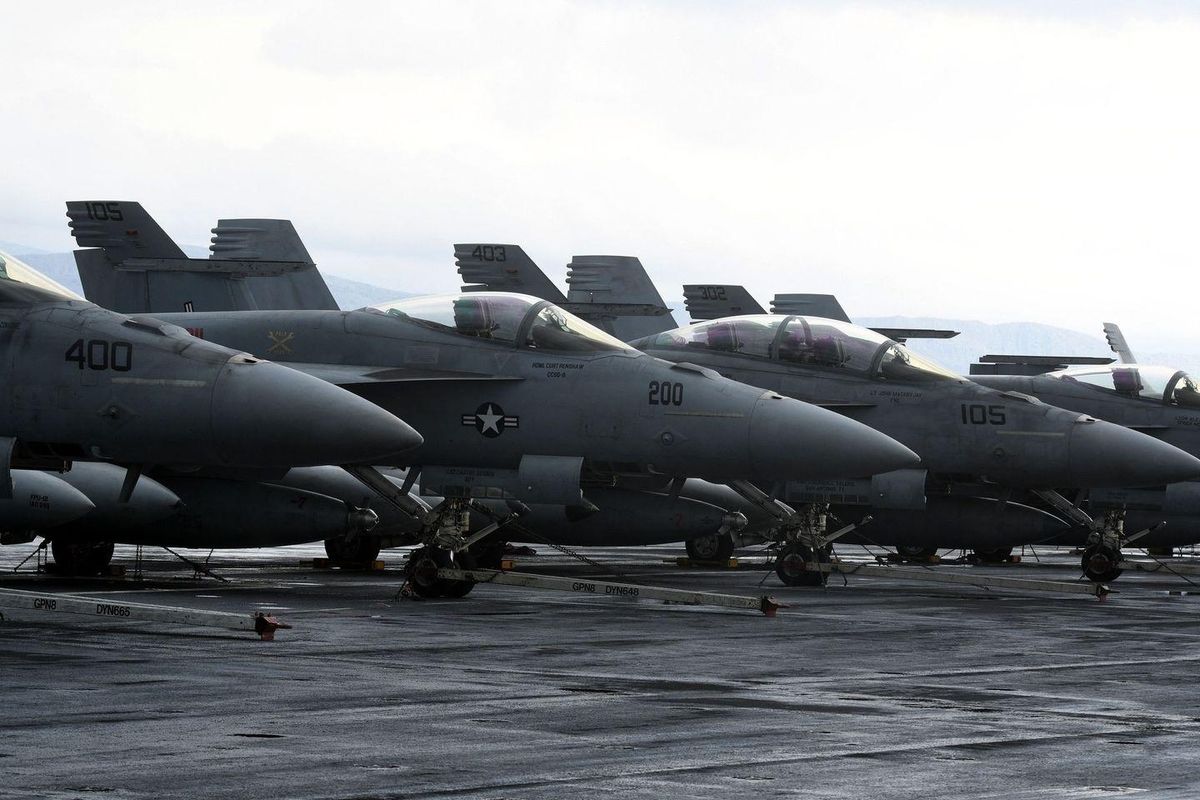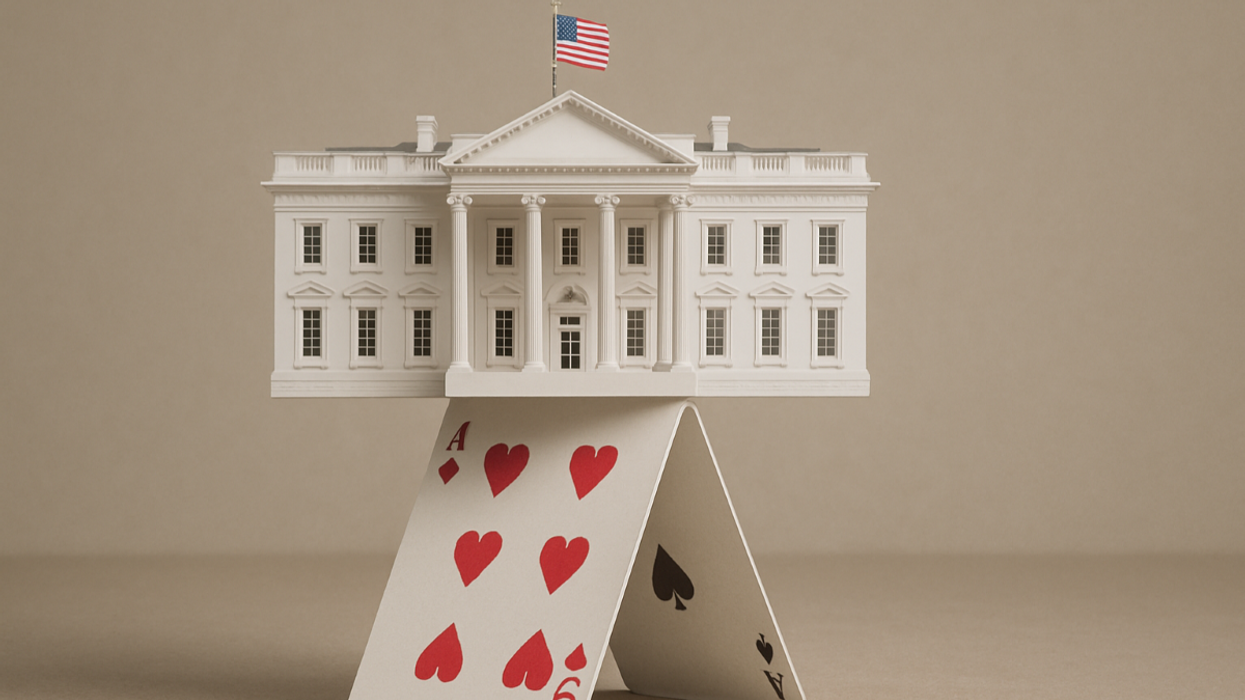During a call with a bipartisan group of more than 300 U.S. members of Congress on Saturday, Ukrainian President Volodymyr Zelensky urged the U.S. and its allies to establish a “no-fly zone” over Ukraine to help the country defend against Russian airstrikes.
“Close the sky over Ukraine! Close it for all Russian missiles, Russian combat aircraft, for all these terrorists, make a humanitarian air zone, without rockets, with air bombs,” Zelensky pleaded again on Sunday following Russian missile strikes on the city of Vinnytsia.A recent Reuters/Ipsos poll found that 74 percent of Americans (including majorities of Democrats and Republicans) support imposing a no-fly zone in Ukraine.
But while a small number of U.S. lawmakers, including Sens. Roger Wicker (R-MI) and Joe Manchin (D-WV) and Rep. Adam Kinzinger (R-IL), have called for the measure to be considered, the vast majority of American and European policymakers have rebuffed the idea as dangerous.
Want to understand the world a little better? Subscribe to GZERO Daily by Ian Bremmer for free and get new posts delivered to your inbox every week.
The Biden administration has repeatedly ruled out imposing a no-fly zone, citing the risk of triggering a “potential direct war with Russia,” while British Prime Minister Boris Johnson said enforcing a no-fly zone is "not on the agenda of any NATO country.” On March 4, NATO Secretary-General Jens Stoltenberg conclusively rejected Zelensky’s pleas for a no-fly zone, saying doing so “could end in a full-fledged war in Europe.”
What is it? A no-fly zone is an area over which aircraft are banned from flying. The point of imposing a no-fly zone over Ukraine would be to prevent Russian airstrikes and airdrops and to enable Ukrainians and their allies to safely move supplies and people across the country.
Here’s the catch: a no-fly zone isn’t just declared. It has to be enforced. In practice, this would require deploying NATO fighter jets to patrol Ukrainian airspace and shoot down any trespassing Russian planes. That’s right, shoot down Russian planes.
If that sounds...serious, it’s because it is: a no-fly zone over Ukraine would put American and European troops in direct military confrontation with Russia.
A no-fly zone is “not some rule you pass that everybody has to oblige by. It’s the willingness to shoot down the aircraft of the Russian Federation,” Sen. Marco Rubio (R-FL) explained. “It means starting World War III.”
Why is it a bad idea? Although Russian President Vladimir Putin views other Western measures like military aid and economic sanctions as “akin to a declaration of war,” he believes that a no-fly zone would be a declaration of war. Imposing a no-fly zone would therefore make NATO a combatant in a war against Russia. This isn’t speculation: Putin explicitly laid out the red line on March 5, saying that a no-fly zone would “be viewed” by the Kremlin as “participation in the armed conflict.”
While the U.S. has enacted no-fly zones in the past—notably in Iraq between 1991 and 2003, in Bosnia between 1993 and 1995, in Kosovo in 1999, and in Libya in 2011—it has never done so against a nuclear-armed adversary or an air force of Russia’s caliber. The stakes are much higher, and the risks greater, in Ukraine.
“For everything we’re doing for Ukraine, the President also has a responsibility to not get us into a direct conflict, a direct war with Russia, a nuclear power, and risk a war that expands even beyond Ukraine to Europe,” U.S. Secretary of State Antony Blinken told NBC’s “Meet The Press” on Sunday.“What we’re trying to do is end this war in Ukraine, not start a larger one,” Blinken said.
You might wonder, ‘What’s the difference between NATO shooting down Russian planes and providing planes and surface-to-air missiles to Ukraine so that Ukrainians do it themselves?’
Sure enough, in the eyes of the Russians both measures are acts of war. But the latter—like sanctions and real-time intelligence-sharing—is qualitatively different, with a built-in ceiling on escalation. Russia will retaliate, but the retaliation will be somewhat proportional to the intervention: cyberattacks, economic countermeasures, energy shutoffs, proxy terrorism, and so on. The risk of the conflict spiraling out of control will be capped. With direct confrontation? It’s a much greater risk.
None of this means that the West should or will idly sit by as Ukraine gets invaded. NATO has already provided a tremendous amount of humanitarian aid, essential supplies, and military support, with much more to come. Congress is reportedly close to approving a $14 billion aid package to Ukraine, and the U.S. and U.K. are set to ban Russian oil imports. These are significant steps.
But even (and, indeed, especially) in war, there have to be guardrails. Implementing a no-fly zone would bring the U.S. and Russia much closer to nuclear confrontation. Let’s say no to that.
🔔 And if you haven't already, don't forget to subscribe to my free newsletter, GZERO Daily by Ian Bremmer, to get new posts delivered to your inbox.



















